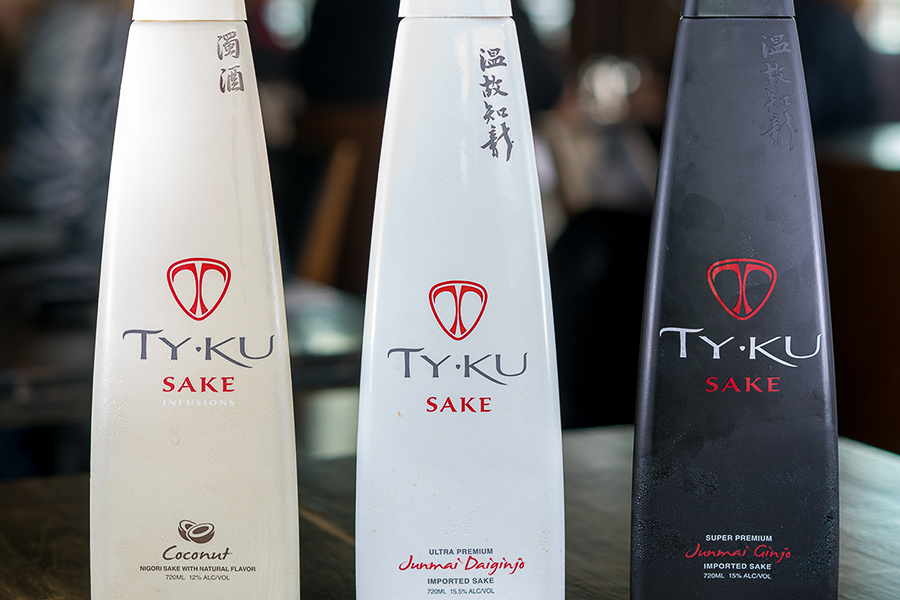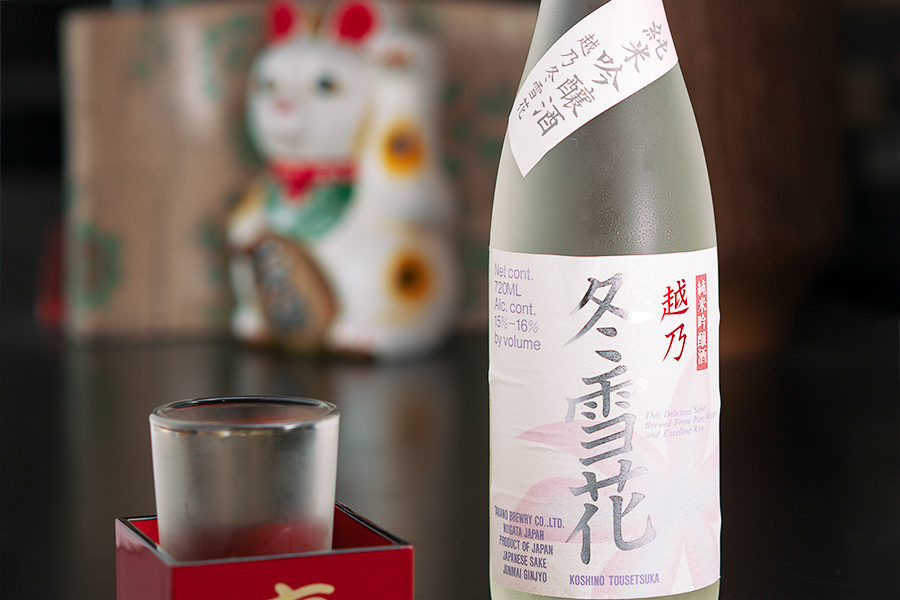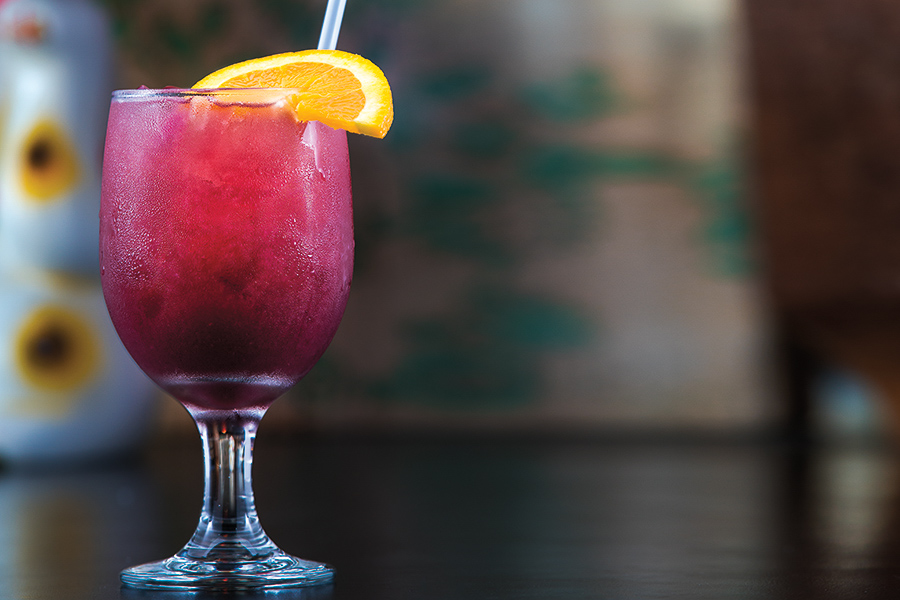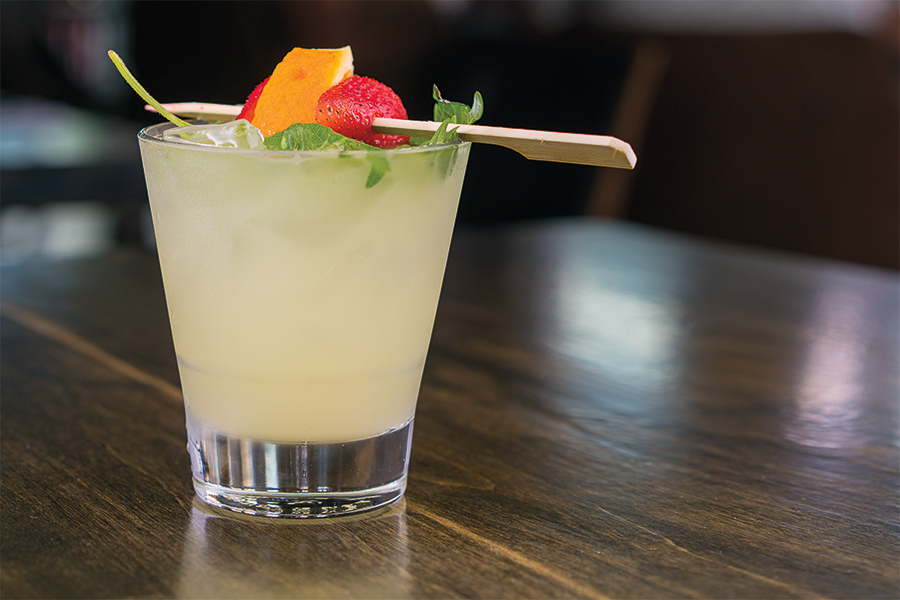Sake holds a singular place within the libational repertoire. Most commonly compared to wine in conversation, due to a flavor profile casually defined in terms of dryness or fruitiness, the brewing process is actually much closer to that of beer—and rice is a grain. But the method of consumption—shooting or sipping from stemless vessels—remains most reminiscent of one’s experience with liquor (which it is not), with the throaty burn and higher alcohol content. So what is sake? It’s its own thing and steeped in more than 2000 years of tradition, so show some respect.

TY-KU SAKE FROM JPAN.
To be fair, origins are disputed, with some claiming early beginnings in ancient China and others saying that the national beverage of Japan rightfully found its start in 8th-century Japan. But regardless of this, that or the undeniable refinement in brewing technique from the days of earthen pots and open fires to modern-day industrial hardware, the core ingredients that make sake what it is remain constant through history: rice and water.

KOSHINO TOUSETSUKA FROM KAZU 2.0.
Distinct from strains typically eaten, sake rice, or saka mai, differs in both appearance and taste, being larger, tougher and generally displeasing to the palate, and is grown specifically for sake production. Because only the starchy inside is desired, grains are stripped of their bran in the washing process and polished to remove oils and proteins before being steam-cooked for fermentation. Water is, of course, central to the fermenting process, but really plays a role throughout the entire affair, from the washing of the rice to the (optional) dilution of the final product at the end, adding its own flavor profile along the way. Keeping things simple and assuming a competent toji—sake brewmaster—the most fundamental factors determining the quality of a sake are the quality of these ingredients.

NIPPON PUNCH FROM KAZU 2.0.
This isn’t to say that the toji themselves don’t play a large role in the final quality of the sake—the process is as much art as science and skilled practitioners receive their due respect. With a fermentation process spanning typically 22–34 days, during which rice and water are formed into a mash, or shikomi, with yeast and koji, a Japanese fungus-mold, and reconstituted throughout, there lies ample time for any seasoned toji to leave his or her mark. If you’re looking to show your appreciation, here are two Sarasota sake hotspots ready to serve.
Kazu’s 2.0
Tucked back in Gulf Gate, Kazu’s 2.0 owner Akiko Tsuchiya serves up sushi rolls late into the night, and with the under-21 crowd banned past 10pm, it’s a great spot to sample all the sake without setting a bad example. With a respectable array of house sakes available for casual sipping, those opting for the real deal skip straight to the craft sake menu, where ten signature sakes imported from notable Japanese toji rule the page. The Tosetsuka, a Junmai Ginjo from Niigata, offers a light and crisp semi-dry sake, while the Zen, a Junmai from Iwate, brings a fuller flavor profile with a smooth finish and the Sawanoi, a Junmai from Tokyo, gives a taste of the super-dry. Many customers prefer sake hot, says Tsuchiya, but she recommends trying it closer to room temperature. “If it’s too hot,” she explains, “it kills the flavor.” For those looking to add a little more fun to their sake exploration, Kazu’s also offers sake floats—a dessert in a shot glass of flavored sake and paired ice cream—and Nippon Punch, a sangria-like concoction of unfiltered sake, red wine and fruit. For the indecisive, just try a little bit of everything with a sake flight.
JPan
Over at Jpan, owner Daniel Dokko brings the acclaimed and award-winning premium sake brewer Ty Ku Sake to the table. “Japanese culture is all about mastery and being the best at one thing, and taking pride in that one thing,” says Dokko by way of explanation. Brewed in Nara, Japan, each Ty Ku sake is all-natural, gluten-free, non-GMO and sulfite-free, made with iron-free water and handmade koji. The Ty Ku Sake White, made from rice milled to an exceptional 60 percent, earned the Junmai Daiginjo designator—no small feat according to Dokko. “The best sake you’ll ever find is the Junmai Daiginjo,” he says. But Ty Ku, and by extension Jpan, offers more than the White, but also the Black (Junmai) and a pair of flavor-infused sakes from Ty Ku—coconut and cucumber. He’s also introducing a new sake cocktail, the Mona Sake, invented in-house and ready to take Sarasota by storm. Sake infused with yuzu, a Japanese lime (“But it tastes more like a tangerine,” says Dokko), results in a citrusy, sweet punch with a kick that goes down easy. Try what you like, but don’t ask them to heat up the Junmai Daiginjo, a trick used for lesser sakes. “It helps disguise the impurities,” explains Dokko, offering one more tip: Always pour for your guests. It’s a sign of respect and to pour for oneself brings bad luck.
Guide to Regionality
Due to heavy reliance on two primary ingredients, a sort of regionalism emerged in the development of sake production throughout the nation of Japan, with different areas evincing distinct flavor profiles based on the rice grown and local water sources available. The coal-mining district of Akita, known for its great rice, became a destination for brewers, as did the district of Nada in Hyogo Prefecture, where local brewing guilds guard the wells and the mineral-rich waters dubbed miyamizu that give their sake its discrete character. Variations in climate also account for some disparity, with sake fermented and stored at lower temperatures in districts like Iwate resulting in more delicate sakes than the full-bodied varietals from Tajima.
Nada
A brewing district responsible for a third of all sake in Japan, the area has historically been known for its high-quality hard water and tojis who produce dry, sturdy and aromatic sake. Destination of Note: Located within Nadagogo, or “five villages of Nada,” where breweries and sake museums abound, find Hakutsuru Sake Brewery, the largest in the nation.
Fukushima
Spared by the 2011 meltdown and well outside the exclusion zone, sake brewers in Fukushima remain hard to pin down. Sharing good water and excellent rice production, three distinct climates in the region lead to a collection of typically softer sakes but with subtle differences in flavor. Destination of Note: Fukushima continues to dominate the Annual Japan Sake Awards with the most gold medals for four years running.
Nigata
With a combination of mineral-rich water from snow-capped mountains, good sake rice cultivars and a critical mass of toji, Nigata is famous for clean, dry and elegant sake. Destination of Note: The Takarayama Brewery, founded in 1885, still operates and welcomes thousands of visitors each year. Not a museum, see sake made on-site and get tips from the brewers.
Akita
Coal-mining country turned sake prefecture, large amounts of exceptional rice led this region down the path to sake production, while harsh winters lend the final product a rich but compact flavor profile. Destination of Note: When visiting the self-proclaimed “kingdom of beautiful sake,” stop by the historic Hideyoshi brewery, founded in 1689 and named for the 16th-century unifier of Japan. All sake is hand-brewed, with the majority premium sake.
Hiroshima
A historically important sake prefecture, Hiroshima made its name not only on the quality of its sake but also the technological advances made there. A soft water region, the sake reflects this in a softer and sweeter flavor profile. Destination of Note: Proud of its many fine sake breweries, the district is also home to the National Research Institute of Brewing, which organizes the Annual Japan Sake Awards.
Kazu’s 2.0, 6566 Gateway Ave., Sarasota, 941-922-5459.
Jpan, 3 Paradise Plaza, Sarasota, 941-954-5726; 229 North Cattlemen Rd., Sarasota, 941-954-5726.









